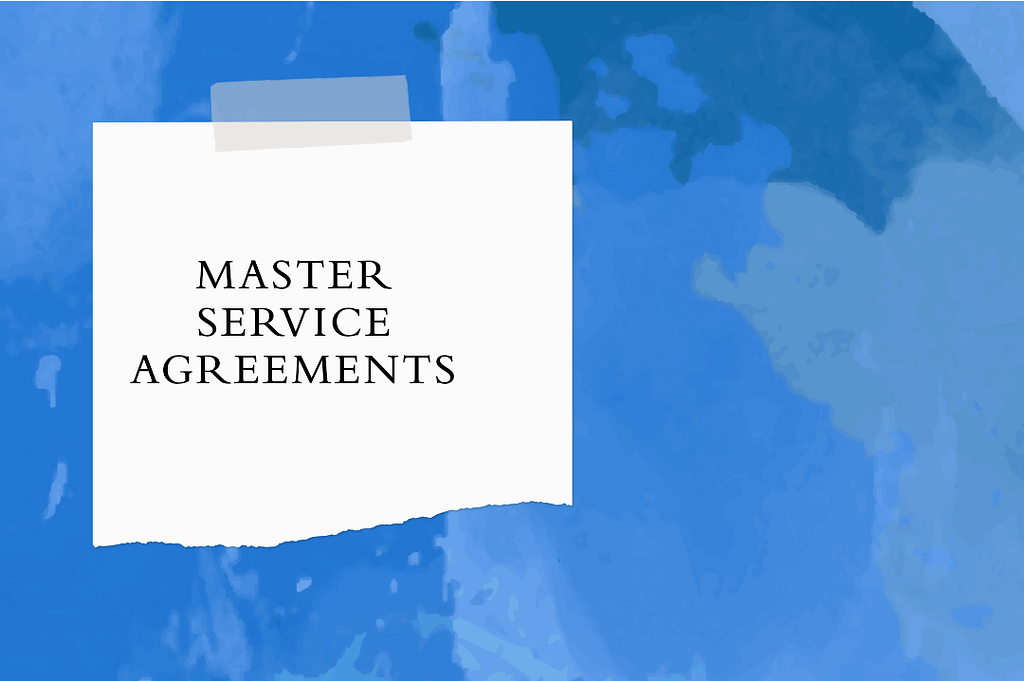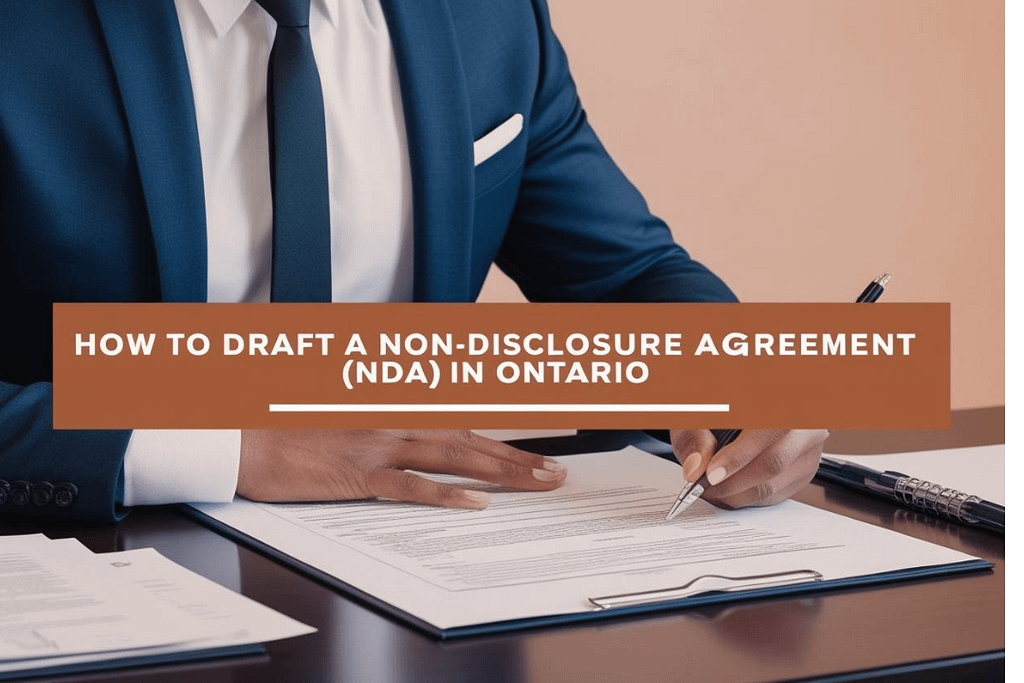A Master Service Agreement (MSA) is a foundational contract between two parties that sets out the broad terms and conditions for an ongoing business relationship. In practice, an MSA defines the general framework such as payment, liability, confidentiality and dispute procedures that will govern any future work or projects between the parties.
For example, an IT vendor and its client might agree on an MSA covering all software development services; each specific project is then carried out under the umbrella of that MSA via individual Statements of Work (SOWs). MSAs are common in industries with long-term or repeated engagements (like technology outsourcing), because they allow parties to negotiate once and then execute multiple projects efficiently. In essence, an MSA is the “master” contract that outlines the parties’ rights, duties and expectations for all current and future dealings.
Need an MSA tailored to your business? Get legal advice now.
Why Businesses Use a Master Service Agreement
Businesses adopt MSAs to streamline their contracting process and manage risk over multiple projects. By establishing most of the deal’s terms upfront, companies save time (and legal fees) since they need not renegotiate basic terms for each new job.
An MSA also reduces uncertainty and disputes. When duties like confidentiality, warranties, and indemnities are spelled out clearly in advance, each side knows what to expect. This upfront clarity helps prevent misunderstandings. By defining critical terms (payment schedule, deliverables, performance standards, etc.) at the start, both sides avoid costly renegotiations later. Moreover, an MSA often fosters a stronger partnership, since negotiating major terms early on builds trust and goodwill in the relationship.
Finally, MSAs are flexible and long-term. They allow companies to plan for future work while accommodating change. Parties typically include clauses that let them issue change orders or new SOWs as needs evolve. This adaptability means the same MSA can support new projects or services over time without starting from scratch each time. In short, businesses use MSAs to speed up future deals, control costs, allocate risk clearly, and support ongoing collaboration.
Key Clauses in a Master Service Agreement
An MSA contains many important clauses. Some of the key provisions typically include:
1. Scope of Work:
A detailed description of the services to be provided under the MSA. This outlines the nature of the work, deliverables, timelines and any performance standards. (Often each specific project’s scope is spelled out later in a separate SOW under the MSA.)
2. Payment Terms:
How the service provider will be paid. This covers pricing models (fixed fee, time-and-materials, etc.), invoicing procedures, payment schedule and any penalties for late payment. Clear payment terms prevent disputes over money.
3. Term and Termination:
The duration of the agreement and how it can be ended. This section sets the initial length of the MSA and conditions for ending it early. It typically explains notice periods, reasons for termination (e.g. breach, insolvency), and any early-exit fees or refunds.
4. Confidentiality:
Terms requiring each party to keep the other’s sensitive information secret. This clause identifies what information is “confidential” (trade secrets, customer data, financials, etc.) and obligates the receiving party not to disclose it improperly. Many MSAs include robust confidentiality promises to protect proprietary data or personal information, often in line with privacy laws.
5. Intellectual Property (IP):
Allocation of IP rights in any work product. This clause clarifies who owns or licenses the intellectual property created or used under the MSA (for example, software code or designs). It ensures that, if the service provider develops new IP for the client, the agreement spells out whether the client gets exclusive rights or a license.
6. Warranties and Representations:
Promises each party makes about its own performance. For example, the provider may warrant that it will perform services with reasonable skill and in compliance with applicable laws, and that it has the authority to enter the MSA. This section can include assurances of competence, qualifications, or licensing.
7. Indemnification:
Each party’s agreement to defend the other against certain claims. Commonly, the provider agrees to indemnify (reimburse) the client for damages arising from the provider’s negligence or third-party IP infringement, and vice versa. This clause allocates liability for legal claims that arise from carrying out the MSA.
8. Limitation of Liability:
This provision limits the maximum amount one party can recover from the other for a breach of the MSA. For instance, the contract may say neither party is liable for indirect damages or that liability is capped at a certain multiple of fees.
9. Dispute Resolution:
This clause may require the parties to negotiate in good faith, use mediation or arbitration, or go to a specific court if a dispute arises. In Ontario, parties can agree to arbitration or specify a particular court (e.g. Toronto Superior Court) as the forum for litigation.
10. Force Majeure:
Definition of unforeseeable events excusing performance. Events beyond a party’s control (natural disasters, war, etc.) are listed so that if such events occur, the affected party is not penalized for delayed or failed performance.
Also Read: Force Majeure in Contracts: A Guide for Ontario Businesses
11. Assignment and Subcontracting:
Whether either party can transfer or subcontract its obligations. Often the customer restricts assignments while the provider may seek some flexibility.
12. Entire Agreement:
An “integration clause” stating that the written MSA contains the full agreement, so that prior negotiations or side promises (unless included) have no effect.
Each of these clauses must be carefully drafted and tailored to the parties’ needs.
Case Laws
Suhaag Jewellers Ltd. v. Alarm Factory Inc. (AFC Advance Integration), 2016 ONCA 33 (CanLII)
Suhaag Jewellers had a contract with Alarm Factory Inc. for security system installation, servicing and monitoring. The contract included a limitation of liability and indemnification clause. A theft occurred, allegedly due to failure of the monitoring service; Suhaag Jewellers sued for breach of contract and tort. Alarm Factory sought summary judgment, relying on the limitation of liability clause.
Issue: Whether the limitation of liability clause in the MSA-type contract was valid and enforceable to limit or exclude damages.
Decision: The Ontario Court of Appeal upheld the limitation of liability clause. The trial court had dismissed the claim based on the limitation and indemnity clause; on appeal, the decision was correct in dismissing Suhaag’s claim (i.e., the clause was effective in limiting liability as per the contract) given the wording in the contract.
2190322 Ontario Ltd v. Ajilon Consulting, 2014 ONSC 21 (CanLII)
The plaintiff (2190322 Ontario Ltd.) had been led to believe there was a consulting position available via Ajilon Consulting; plaintiff declined other work. The job turned out not to materialize. Plaintiff alleged negligent misrepresentation. The parties had an agreement containing an Entire Agreement Clause which purported to exclude prior representations.
Issue: Is the Entire Agreement Clause (and similarly limitation of liability clauses) enforceable in this context? Can such a clause prevent a party from being liable for misrepresentations made before the contract?
Decision: The Ontario Superior Court held that although the Entire Agreement Clause did apply to prior representations, it was unenforceable in that case because it was unconscionable. Key factors included: disparity in bargaining power, failure to draw the clause to the attention of the plaintiff, and the plaintiff’s relative lack of sophistication.
Benefits of a Master Service Agreement for Both Parties
A well-drafted MSA provides substantial advantages to both the service provider and the client.
1. Faster Deal Flow: Since most terms are already negotiated, new projects can proceed quickly. Companies can approve Statements of Work or purchase orders referencing the MSA without re-hashing all terms.
2. Cost Savings: Time is money. By avoiding repeated legal negotiations, both sides save on legal and administrative costs. For example, standard clauses on change orders or scope changes mean fewer billable hours for lawyers each time a small modification is needed.
3. Risk Management and Clarity: All key obligations are defined at the outset, reducing uncertainty. For instance, the MSA can allocate the risk of delays, data breaches or service failures clearly (via warranty, indemnity and limitation clauses). With these provisions in place, each party knows its maximum exposure and liabilities from the start. This clarity helps companies make informed business decisions and often makes it easier to obtain insurance.
4. Legal Protections: An MSA explicitly addresses legal issues (e.g. indemnities, intellectual property, confidentiality), so each side can see how risks are shared.
A client, for example, can ensure there is a remedy if the provider’s deliverables infringe third-party rights. Conversely, a provider can limit its liability to what was agreed. Such negotiated protections are far preferable to relying on default legal rules.
5. Strong Relationship: Negotiating an MSA up-front to negotiate MSAs can help foster good working business relationships from the outset. The dialogue required to reach agreement often surfaces important concerns early, helping prevent surprises later. Having an MSA signals a commitment to a long-term partnership, which can improve cooperation and trust.
6. Adaptability: Parties can build flexibility into the MSA. For example, the agreement might allow new services to be added by change order, or include options to renew under modified terms. This means the contract can evolve as the business relationship grows. The result is a framework that balances stability (fixed general terms) with adaptability (flexible project details), enabling both parties to plan ahead while handling changes smoothly.
Common Mistakes to Avoid with Master Service Agreements
Even though MSAs are powerful tools, they can backfire if not handled carefully. Common pitfalls include:
1. Vague or Ambiguous Terms: Using imprecise language (like undefined terms or blanket phrases) can lead to costly misinterpretation. For example, saying the provider will do all necessary work is too broad. Courts in Ontario insist on clear, definite terms for a contract to be enforceable.
2. Failure to Address Liability and Indemnification Clearly: Some parties overlook fully spelling out who bears which risks. Omitting or skimping on indemnity clauses means each side may unexpectedly be on the hook for the other’s problems. Similarly, not agreeing on a liability cap leaves the default law (often unlimited liability) in place.
3. Omitting Termination and Renewal Conditions: Surprisingly, some MSAs lack clear termination rules. If the contract fails to state how and when it can end, either party may later be trapped by the lack of exit conditions.
For example, failing to include a notice period or termination-for-convenience clause can create confusion or leave the agreement indefinite. It’s essential to specify the notice periods, grounds for termination, and whether termination fees apply.
4. Not Reviewing and Updating Regularly: Once the MSA is signed, business needs may change. A static MSA that never gets revisited can become outdated. A common mistake is to sign and forget leaving the same old MSA in place indefinitely. Instead, schedule periodic reviews.
5. Not Highlighting Onerous Clauses: Parties sometimes fail to draw attention to especially harsh or unusual terms. Ontario courts have taken note of this: in MacQuarie Equipment Finance v. Durham Drug Store (2020), the Court of Appeal refused to enforce a broad “no-cancellation” lease clause because it conflicted with the MSA’s termination clause and had not been clearly pointed out to the signer. The lesson is to avoid burying critical terms without emphasis. Any clause that disproportionately favours one side (late fees, large penalty, exclusive jurisdiction) should be clearly highlighted or explained during negotiations.
6. Mixing Multiple Contracts Without Clarity: By design, an MSA links to other documents (like SOWs, POs, NDAs). A trap is failing to tie them together clearly.
For example, a purchase order should unambiguously state that it is governed by the MSA. If a new supplier agreement is used instead of an established MSA without realizing it, inconsistent terms may apply. Always cross-reference related contracts and ensure everyone understands which rules govern which work.
What Kind of Contracts Can you Execute Under a Master Service Agreement?
An MSA is often called a framework or umbrella contract: it sets the stage for various specific agreements to be executed under it. Common child contracts or documents used under an MSA include:
1. Service-Level Agreement (SLA)
An SLA is a detailed contract that defines the quality and performance standards for a particular service. For example, it may specify uptime percentages, response times, accuracy, penalties or credits if service levels fall short. While the MSA handles the overall relationship, the SLA drills down into how well the services must be performed.
2. Statement of Work (SOW)
A SOW is the most common document under an MSA. Each time a specific project or task is undertaken, the parties sign a SOW that references the MSA. The SOW lays out exactly what work will be done, by whom, and for how often including detailed deliverables, schedules and milestones. The SOW is governed by all the general terms of the MSA (payment, liability, etc.), so the parties need only define the specifics of each job in the SOW.
3. Non-Disclosure Agreement (NDA)
Although the MSA usually contains basic confidentiality terms, sometimes parties execute separate NDAs for particularly sensitive projects. An Non-Disclosure Agreement can be executed under the MSA for a one-off project that requires extra secrecy (for example, if extremely sensitive data or trade secrets will be shared). The NDA will typically incorporate or reference the MSA’s terms but focuses solely on protecting information.
4. Change Order
When the parties need to alter a SOW or the scope of work (e.g. adding extra tasks or changing the timeline), they use a change order document. This is formally a modification to the original SOW/MSA. By process, the MSA will usually require that any material change be in writing (often via a change order) and agreed by both sides.
5. Purchase Order (PO)
In some industries, especially procurement of goods or standard services, the buyer may issue purchase orders that incorporate the MSA’s terms. A PO typically authorizes the delivery of specific services or products and binds the seller to the MSA’s conditions.
6. License Agreement
If the MSA involves granting rights to intellectual property (for example, software or patents), a separate license agreement might be executed. This license sets out the exact usage rights (e.g. one-time license vs. ongoing royalty) that are granted under the MSA. For instance, a software vendor MSA might be accompanied by a software license grant.
7. Professional Services Agreement (PSA)
In some fields (engineering, law, consulting), the child contract is called a Professional Service Agreement or similar, which mirrors the role of an MSA/SOW combo. A PSA typically stands for one specific engagement but may itself look like an MSA. However, in a strict sense, each engagement PSA can be thought of as a SOW under the main MSA.
These are common examples, but any document defining a particular order or task can ride under an MSA. The key is that all such documents incorporate the MSA’s terms. That way, any obligation that arises is automatically subject to the agreed-upon rules.
Drafting a Master Service Agreement
Drafting a solid MSA takes careful planning. Usually, the process begins with term sheets or bullet points summarizing the key deal terms (scope, fees, timeline, etc.). The legal or contracts team then converts this into a formal MSA document. At this stage, it’s wise to start with a well-tested template and customize it: for example, one can begin with a standard MSA form and then edit clauses to fit the industry, parties’ needs and governing law.
Once a first draft is ready, it is circulated for review. Often this means back-and-forth edits between the business teams and counsel.
During negotiations, parties should pay particular attention to enforcing clarity.
For example, include a defined-terms section to avoid ambiguity. Customize clauses like termination (e.g. add a termination-for-convenience right if needed), dispute resolution (specify Ontario law if both parties are Canadian), and any industry-specific requirements (such as compliance with Canadian privacy laws). In Ontario, MSAs are generally governed by contract law principles.
After the terms are finalized, the MSA is executed by both parties.
Example: Suppose an Ontario software company (Supplier) and a hospital (Customer) plan a long-term collaboration. They might draft an MSA where the Supplier promises to develop, maintain and support a billing software. The MSA would cover payment terms (how the hospital pays monthly service fees), IP ownership (the hospital owns data, the supplier owns the code), liability limits, confidentiality of patient data, etc. Then, when the hospital needs a new feature, they sign a Statement of Work under the MSA detailing that feature’s requirements, schedule and cost. The MSA’s terms automatically apply to that SOW, avoiding the need to renegotiate basics each time. Throughout, both sides should review the MSA’s clauses (with lawyers if possible) to ensure everything is fair and clear.
Conclusion
A Master Service Agreement is a powerful contract tool for Ontario businesses engaging in ongoing services. It creates a stable, predictable legal framework for the relationship, covering payment, IP, confidentiality, liability and more. By negotiating these issues once up front, companies save time and reduce risk on every subsequent project. However, the MSA must be drafted and managed properly: use clear language, cover all key terms in detail, and highlight any unusual clauses so both sides fully understand them. Ontario courts have reminded us that surprise one-sided terms can be struck down if not brought to attention.
Book a consultation with our Ontario contract lawyers today.








